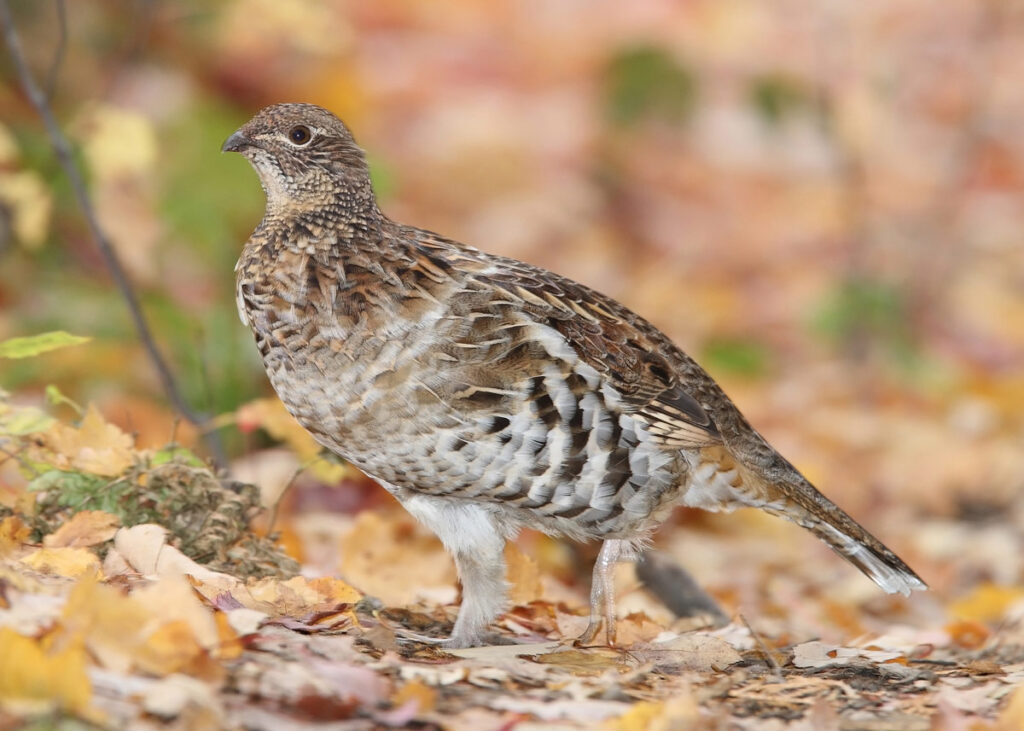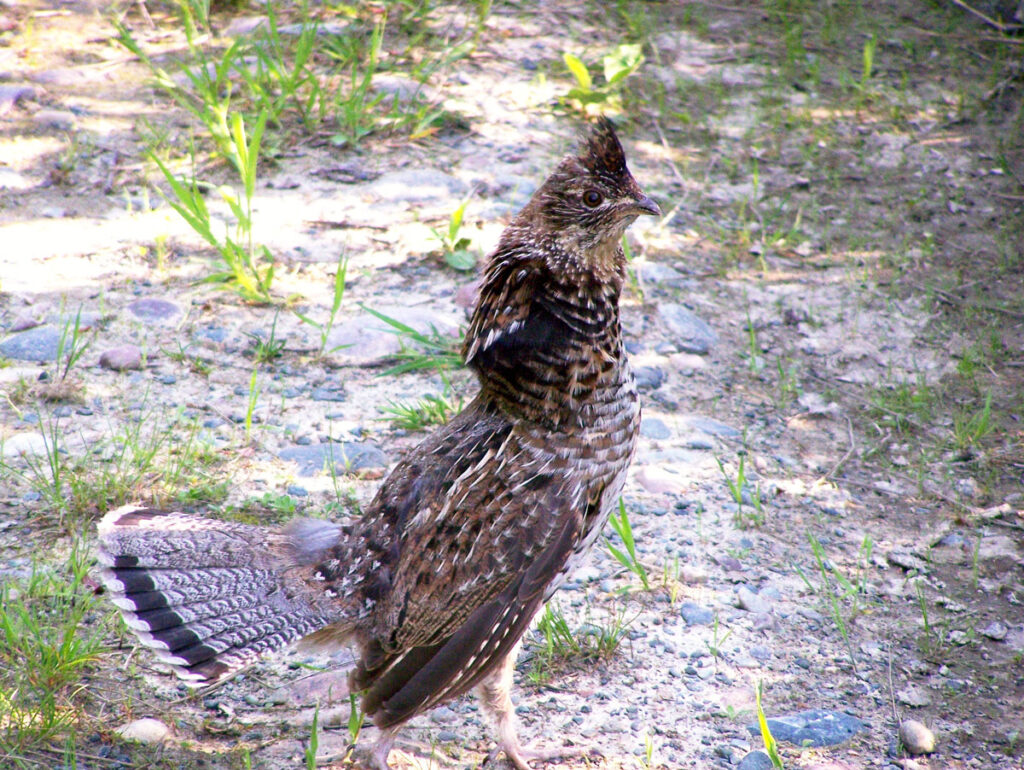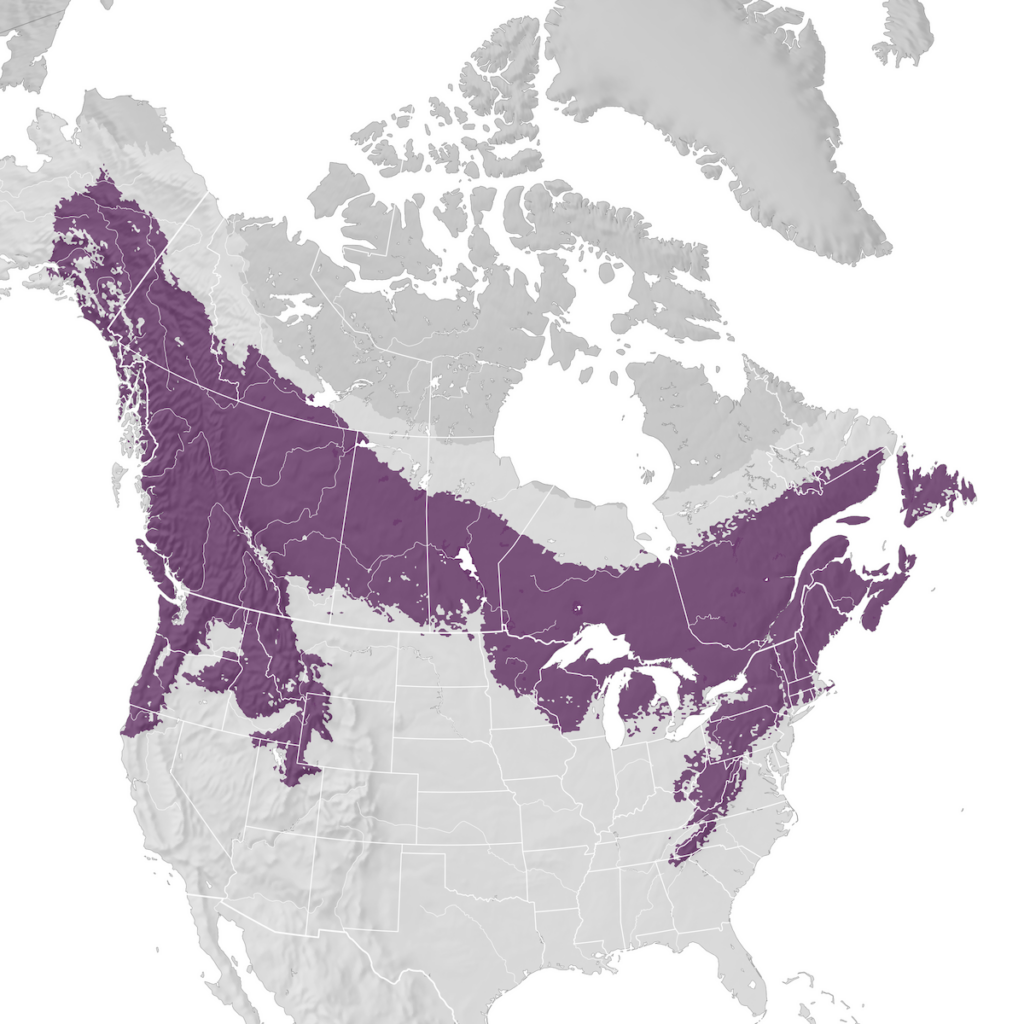The ruffed grouse is common throughout most of Canada. It does not migrate and, once established, lives all its life within a few hectares. The ruffed grouse spends most of its time quietly nesting on the ground, and when surprised, may explode into flight, beating its wings very loudly.
Please ride in control & watch out for grouse and other wildlife resting on the trails. Trail users should share sightings of grouse nesting on trails in a Trailforks report. The grouse are not always quick to move when surprised by trail users, so be ready to stop & wait for adult grouse and chicks to move off the trail before proceeding.
The ruffed grouse feeds on buds, leaves, and twigs of deciduous trees such as willow, maple, and alders.


Spring is mating season. Hens are attracted by males drumming. The drumming itself is a rapid, wing-beating display that creates a low-frequency sound, starting slow and speeding up (thump … thump … thump..thump-thump-thump-thump). Even in thick woods, this can be heard for up to .5km. Both males and females mate with any grouse and do not live in pairs.
After mating, the hen builds a nest making a shallow bowl in the warm dry dirt which is lined with forest materials and feathers and can often be seen on trails. After laying eggs, she incubates them and they hatch around June. Only one clutch is produced a year.
The hen will protect her young, particularly before they can fly. When startled by something, the hen distracts attention from her chicks by dragging one wing on the ground as if it were broken while the chicks hide.
In autumn, when the young are almost fully grown, the young grouse disperse throughout the forest, seeking a place of their own to live.
Ruffed grouse find good habitats to dwell in clear cuts and less mature forests. In Cumberland, we have multiple trails in those kinds of habitats.
Please ride and use the trails with care and consider other users at all times. Report any concerns on Trail forks.



